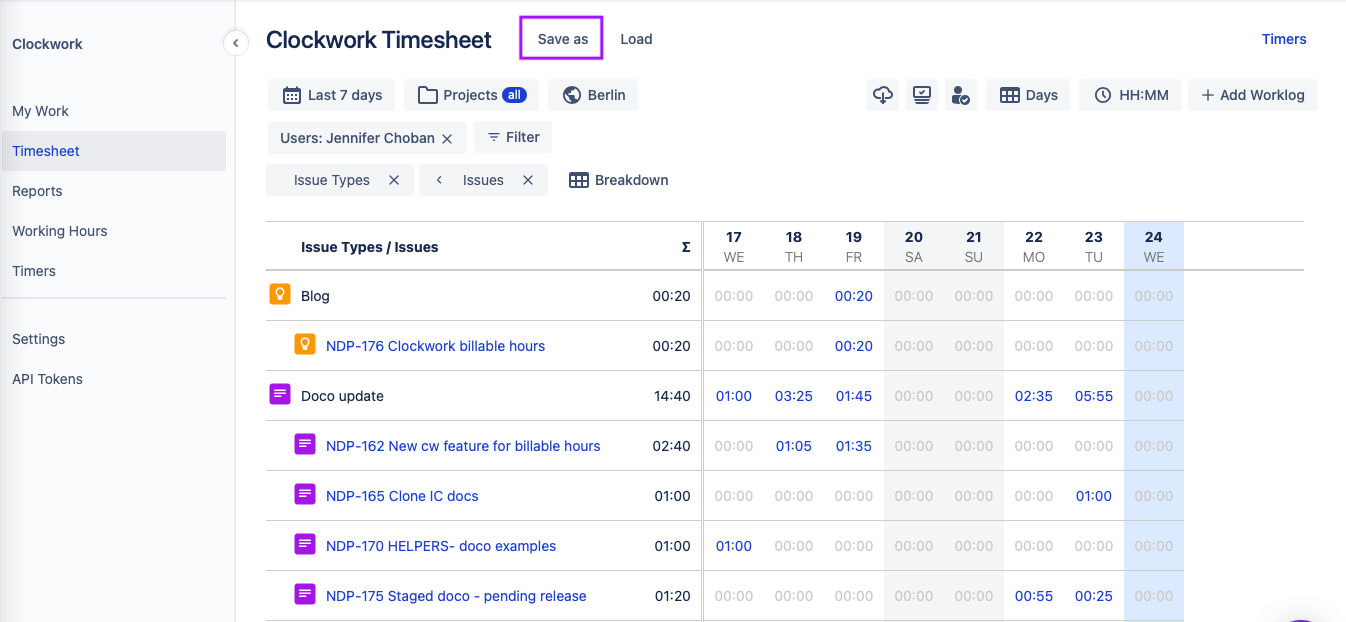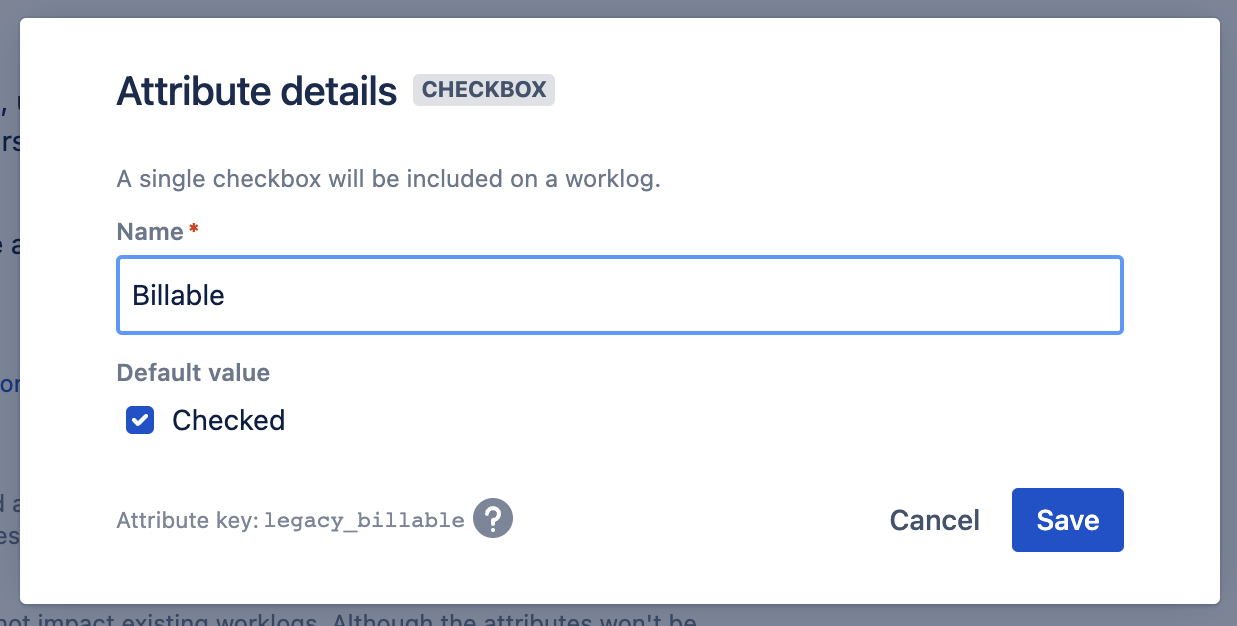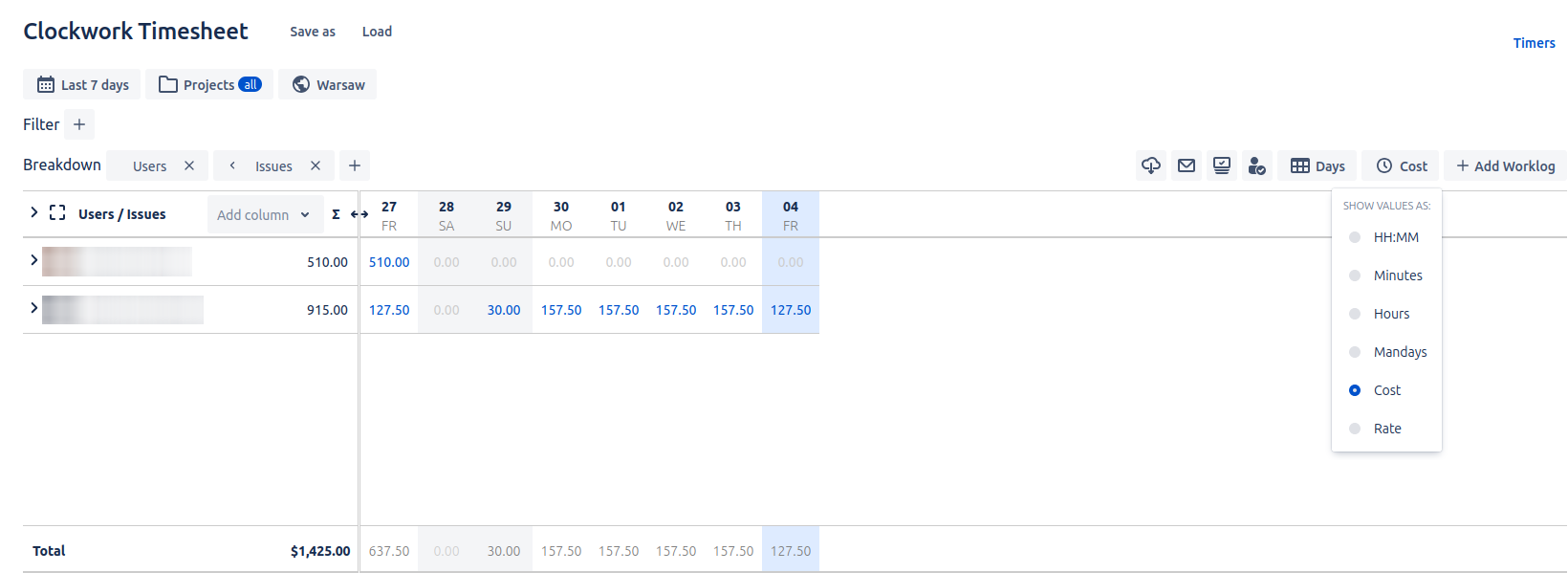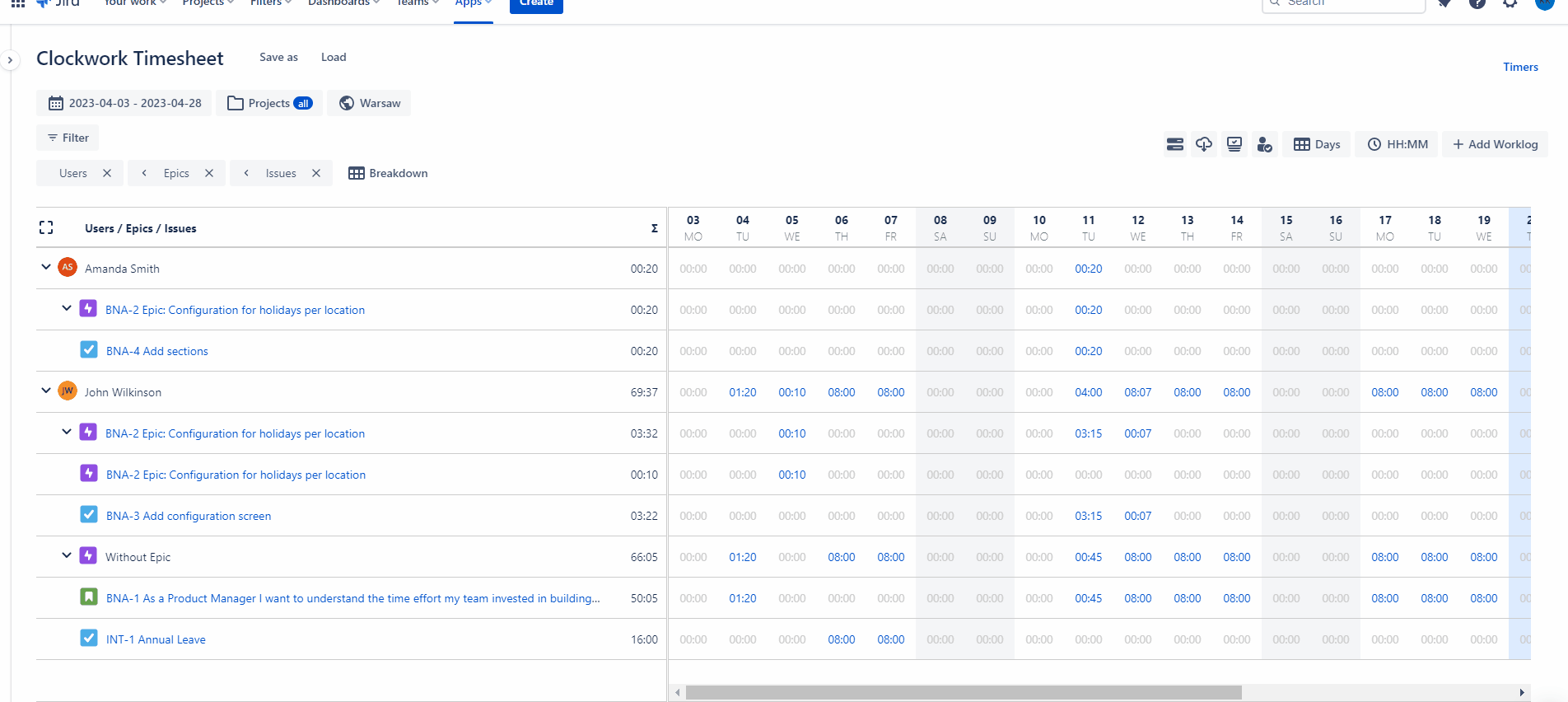Whether you’re a project manager trying to decide if your team has the capacity to take on something new, a scrum master wanting to improve your estimates, or administrator wanting to expedite your billing process – you need rich, customizable time tracking reports. Here you can learn what’s natively available in Jira, then explore how to enhance your Jira time tracking reports to provide more information and address more use cases such as billing, estimation and capacity planning.
Native Jira Time Tracking Report
There are three native Jira time tracking reports; Time Tracking Report, User Workload Report and Version report. The native Jira time tracking reports offer some flexibility by allowing you to configure the following settings:

But what if you want to segregate your Jira time tracking report by billable and non-billable hours? Or only see users who are putting in overtime? Or figure out if you can patch together enough time to take on a new project? If you want to slice and dice your time tracking data to create custom reports, you’ll want to use a Jira time tracking app like Clockwork for Jira.
How to Create a Jira Time Tracking Report in Clockwork
Clockwork for Jira provides users with three different ways to capture work in Jira. Then you can use the Clockwork interface to view the specific data you’re looking for and save it as a report.
Step 1 – Set Filters
To create a Jira time tracking report in Clockwork, start by configuring a timesheet. After selecting the date range and project(s) to include, you can further filter the timesheet by:
- User(s)
- Outliers (over/under time work compared to configured working hours)
- Epics
- Groups
- Issue Types
- Fix Versions
- Issue Keys
- Label
- Custom Fields
- Clockwork Teams
- Worklog Attributes
Step 2 – Breakdown the Data
Once you’ve filtered for the worklogs you want to include, the next step is to configure how you want to see the data. Clockwork allows you to break the data down by multiple factors:
- Users
- Project
- Components
- Affects Versions
- Fix Versions
- Issue Types
- Epics
- Parents
- Issues
- Current Status
- Worklogs
- Billable
- Tags
- Label
- Custom Fields
- Clockwork Teams
- Worklog Attributes
Step 3 – Save the timesheet as a Report
Now that the timesheet is configured to show the data you’re looking for, simply click on the Save as button and name the Jira time tracking report. The report will allow you to see current data without recreating the configuration each time.

Using a Jira Time Tracking Report for Billing and Invoicing
The flexibility of Clockwork’s time tracking reports means you can configure reports to address specific use cases. This example uses worklog attributes, cost and rate tracking and locked billing periods to create a report which can be used to easily create invoices for your clients:
Configure your Jira Worklogs to Collect the Data You Need

Clockwork allows you to add custom attributes to your Jira worklogs. For billing you will obviously need a an attribute to capture whether or not the work completed was billable. Depending on how you have Jira configured, you may want to create attributes for:
- Billable / Non-billable hours
- The client (if you manage more than one client in the same project)
- The activity
- The cost center
Configure Costs and Rates for your Users
You can also set costs (the amount an hour of your user’s time costs your company and rates (the amount you will bill for an hour of your team member’s time for each users. Then when it’s time to produce an invoicing report, you can simply toggle between time and rate view.

Along with being convenient for billing, cost and rate tracking allows you to project revenue and ensure that your projects stay on budget.
Assuming that your team always enters real time data (easy to do if you’re using Clockwork timers or automatic time tracking), then you can simply use the above attributes in your the filters and breakdowns to create a Jira time tracking report that provides all of the data you need for billing.
If you struggle with getting members of your team to enter their timesheet data on time so you can create your invoices, Clockwork provides timesheet reminders and lockable billing periods (weekly, bi-weekly, monthly, or any other) that prevents users from adding, editing, or deleting data after the closing date. See this article for more recommendations on using Jira timesheets for billing and invoicing.
Using a Jira Time Tracking Report for Estimation
Another use of Jira time tracking reports is to improve estimation. Estimating the time needed to complete an issue is an integral part of agile development, but as human we’re prone to being overly optimistic in our planning. To counter this tendency, include actuals vs estimates in your reports so that you regularly see the difference, and gradually begin to improve your estimations.

Using a Jira Time Tracking Report for Capacity Planning
Seeing estimated vs actuals is helpful for forecasting when current projects will be completed. If you want to take your planning a step further you can download your time tracking report as a spreadsheet and then perform calculations. This can be useful for capacity planning as it allows you to see what percentage of a person’s time is spent on a given project.










